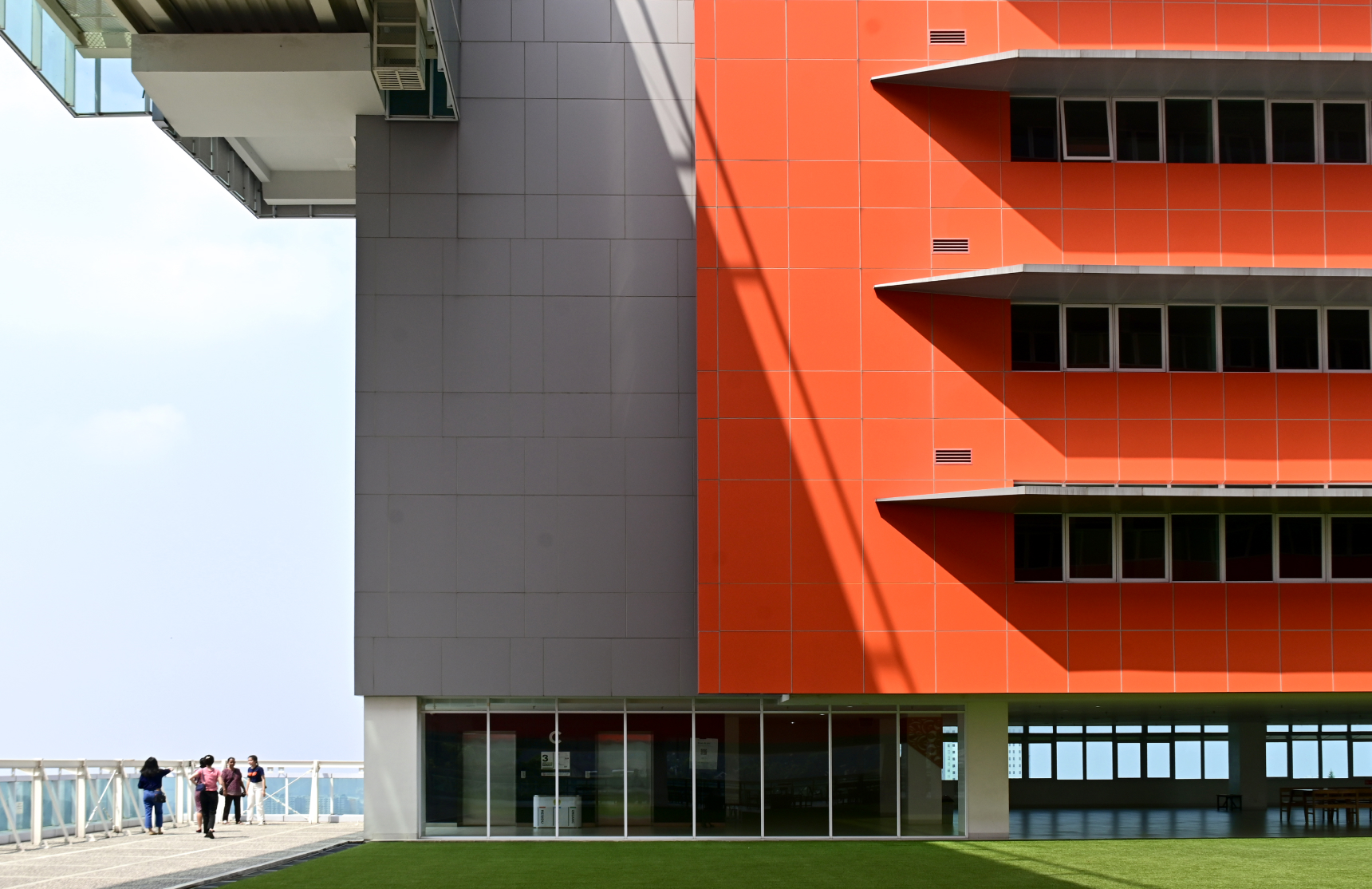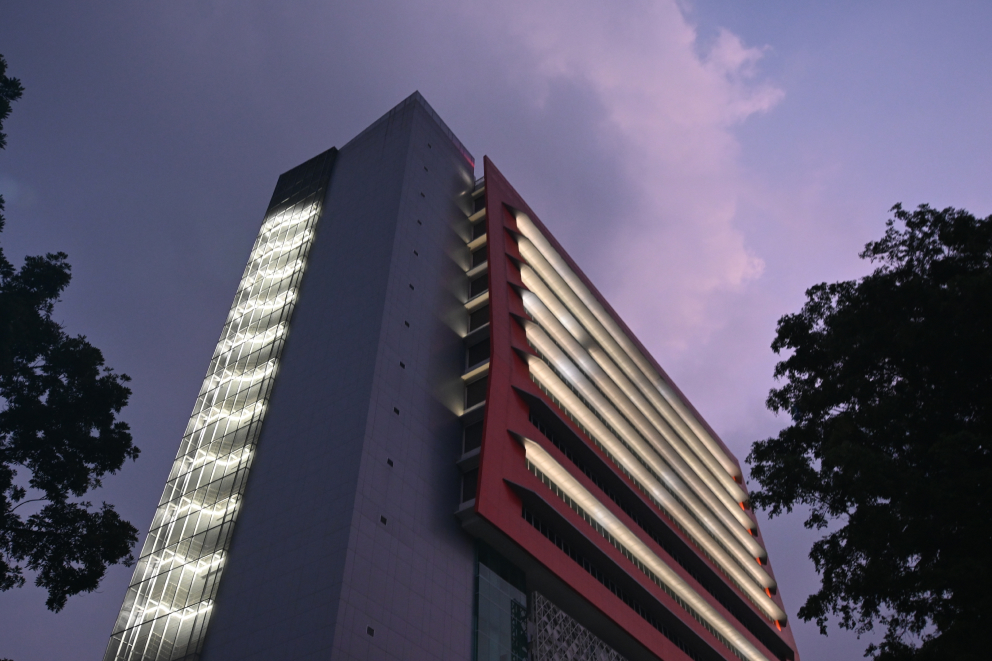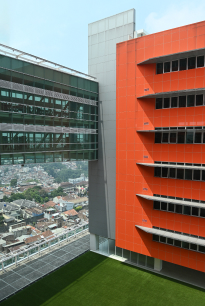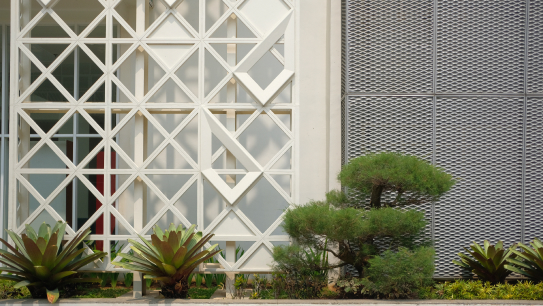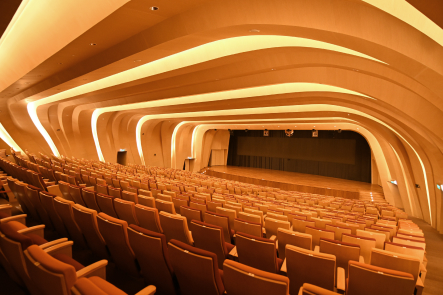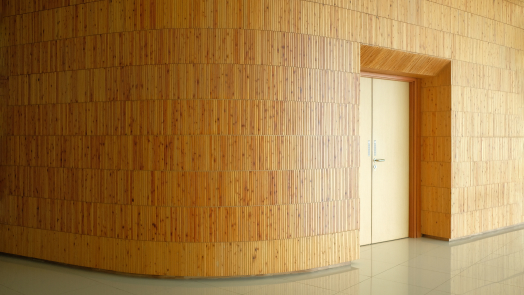Parahyangan Catholic University
Bandung, Indonesia
In the contemporary landscape of campus building design, several key considerations emerge as paramount. First and foremost is to acknowledge the changing nature of learning.
As technology playing an increasingly important role in education, it is important to provide environments that encourage interaction and cross-disciplinary research. Yet, it is also critical to accommodate the essence of focused learning, in which students are able to engage deeply in their studies without distraction. Balancing these opposing goals is a significant challenge.
Anggara Architeam has adeptly addressed this challenge in their design. They’ve designed a campus building that combines enclosed spaces, resembling a sculptural mass, with interconnected regions, such as the sky bridge. Situated on a limited 1.55-hectare plot of land, this design maximizes density by vertically stacking up to 14 floors in the north tower and 11 floors in the south tower, both thoughtfully connected by a bridge. This verticality optimizes space utilization while preserving the crucial duality of learning environments. Furthermore, the architects’ commitment to energy efficiency and sustainability ensures that this structure not only meets the present needs of its users but also contributes to a greener and more sustainable future. Moreover, the inclusion of an auditorium with 1,000 accessible seats demonstrates a commitment to accommodating large-scale events and gatherings, enhancing the building’s versatility and relevance in the academic community.
Contemporary auditorium design emphasizes utility while also providing varied sensory needs for activities such as lectures and plays. This involves factors such as sightlines, visual comfort, acoustics, accessibility, temperature control, and ventilation. In line with technology improvements, Anggara Architeam’s design for the 1000-seat auditorium at Universitas Parahyangan’s Arntz-Geise campus prioritizes modern sound, display, lighting, and interactivity capabilities. The auditorium, which is set to open in August 2020, features warm tones, a curving ceiling with strip lighting, and a seating plan meant to maintain clear sightlines to the stage. The multiple-aisle arrangement makes it easier for audience members to get around, resulting in a practical and visually pleasing area.
Principal & Lead Architect
- Budi Sumaatmadja
Design Principal
- Adri R. Hanafi
Project Director
- GD Noegroho Tjiptorahardjo
Project Manager
- Gembong Reksa Kawula
- Quarta Gandibha
Design Team
- Herpi Latief
- Agus Hendro
- Budiman
- Samiaji Isnaini
- Febri Simanjuntak
- Vivien Vallendri
- Dimas Eka Rachmaputra
- Karina Prasthiany
- Caryna Arviany
- Budiyono Santoso


